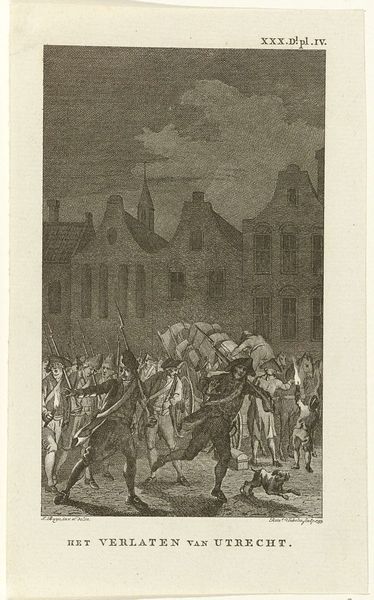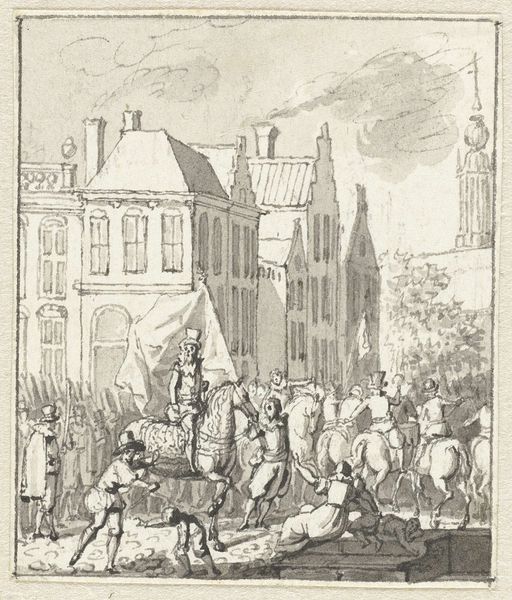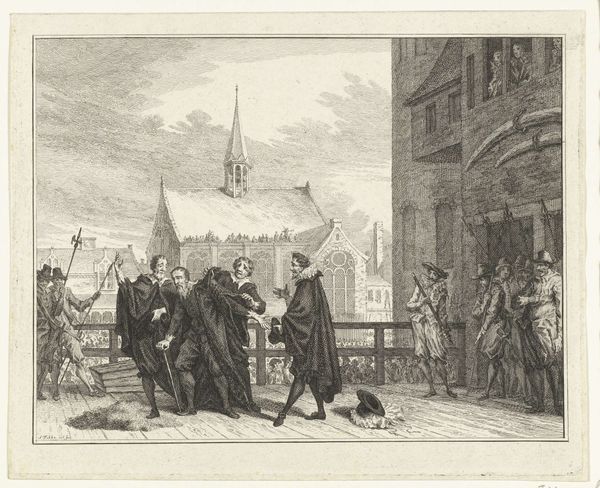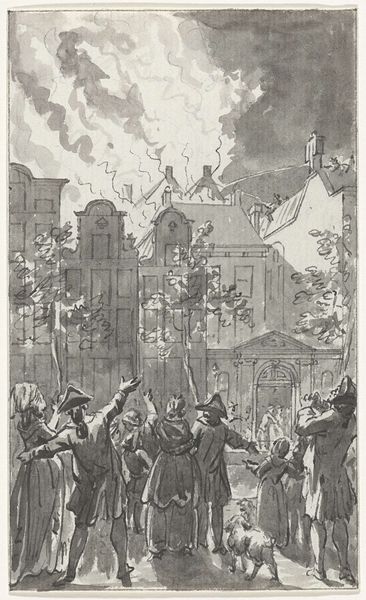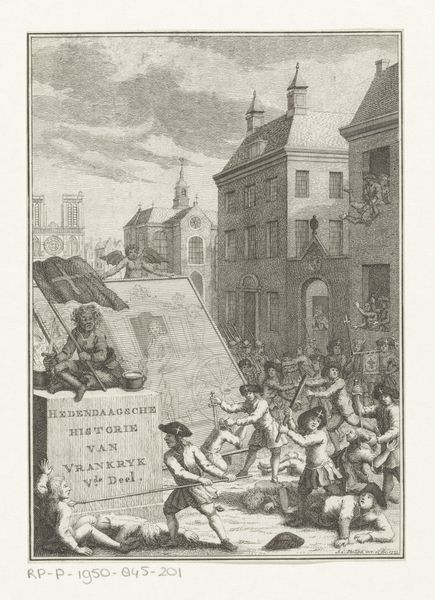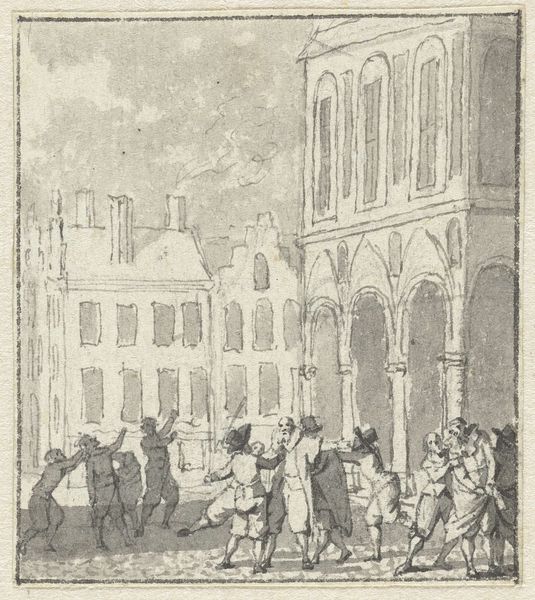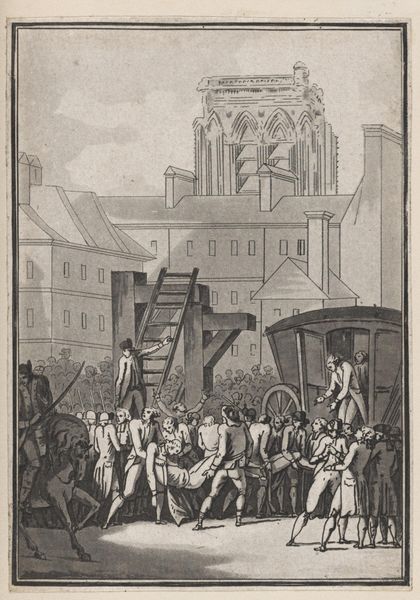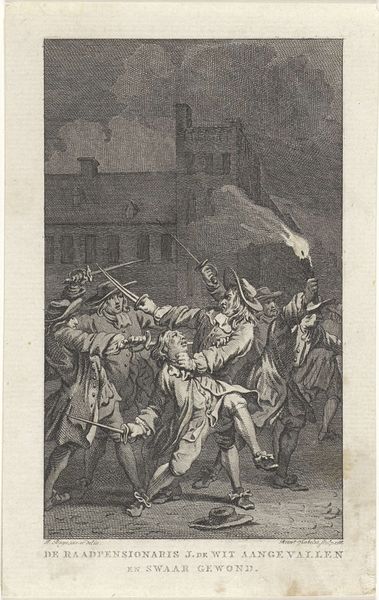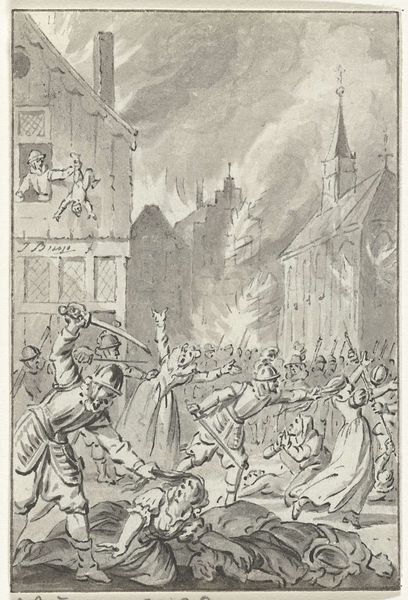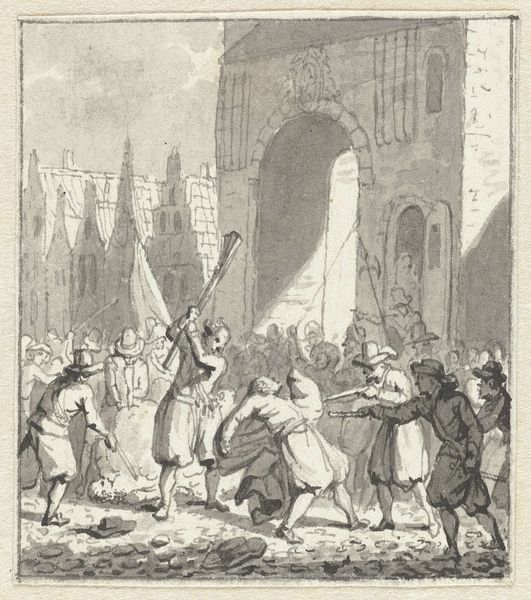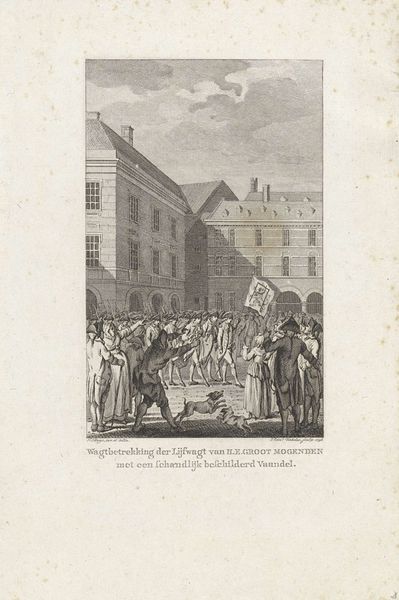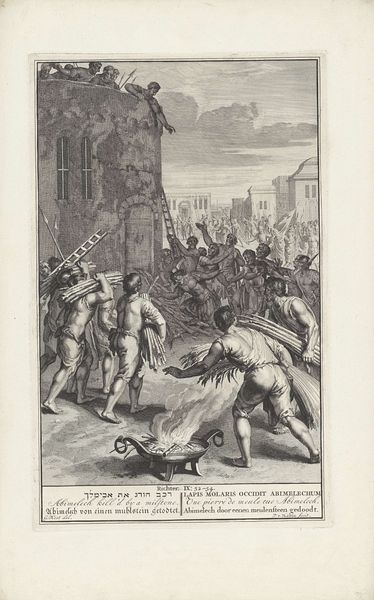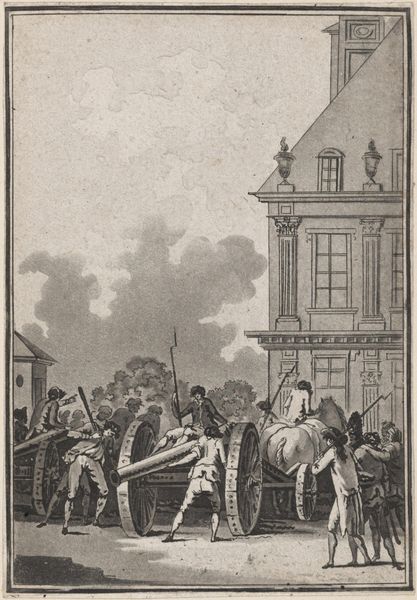
drawing, paper, ink, pencil
#
drawing
#
narrative-art
#
pencil sketch
#
paper
#
ink
#
pencil
#
cityscape
#
history-painting
#
realism
Dimensions: height 65 mm, width 55 mm
Copyright: Rijks Museum: Open Domain
Editor: So, this ink and pencil drawing on paper is called 'In 't Jaar 1788,' placing its historical setting, though created between 1789 and 1810, by an anonymous artist and held at the Rijksmuseum. It looks like a chaotic cityscape scene. What historical narratives are embedded in this image? Curator: Given the title and date, it most likely depicts unrest related to the Patriot movement in the Dutch Republic during that period. These Patriotten, influenced by Enlightenment ideals, sought to curtail the power of the Stadtholder. See how the artist captured the palpable tension in the streets, with figures seemingly clashing? What details strike you? Editor: The contrast between the detailed buildings and the more vaguely drawn crowd. It feels like the buildings are meant to last, while the people are just caught up in the moment. Curator: Exactly! Consider that choices about what and how to depict such scenes could dramatically influence the way events were understood and remembered, especially considering the period’s political volatility and high social stakes. Does the depiction support or question the Patriot cause, in your opinion? Editor: Hmm...it's hard to tell. The chaos suggests instability, perhaps critiquing the Patriots. But the focus on the people, not just the buildings, gives them agency. Curator: Precisely! The power of art lies not just in its representation, but in how that representation can be read differently by distinct audiences, throughout different moments in history. Editor: So the drawing becomes part of the historical record, but also shapes it! Curator: Absolutely! It is in constant dialogue with the sociopolitical forces around it. Editor: It gives me a lot to consider how artists and the public actively participate in historical dialogue. Curator: And the museums that choose to display such art become sites of interpretation and active public engagement with this historical and social dialogue.
Comments
No comments
Be the first to comment and join the conversation on the ultimate creative platform.

